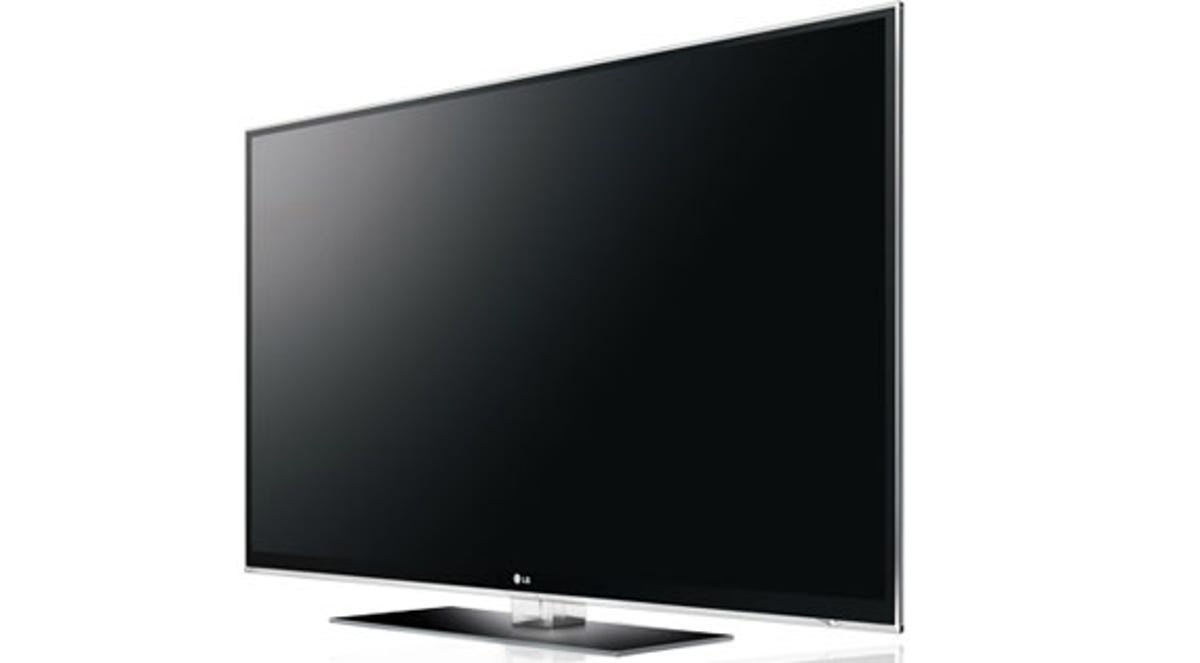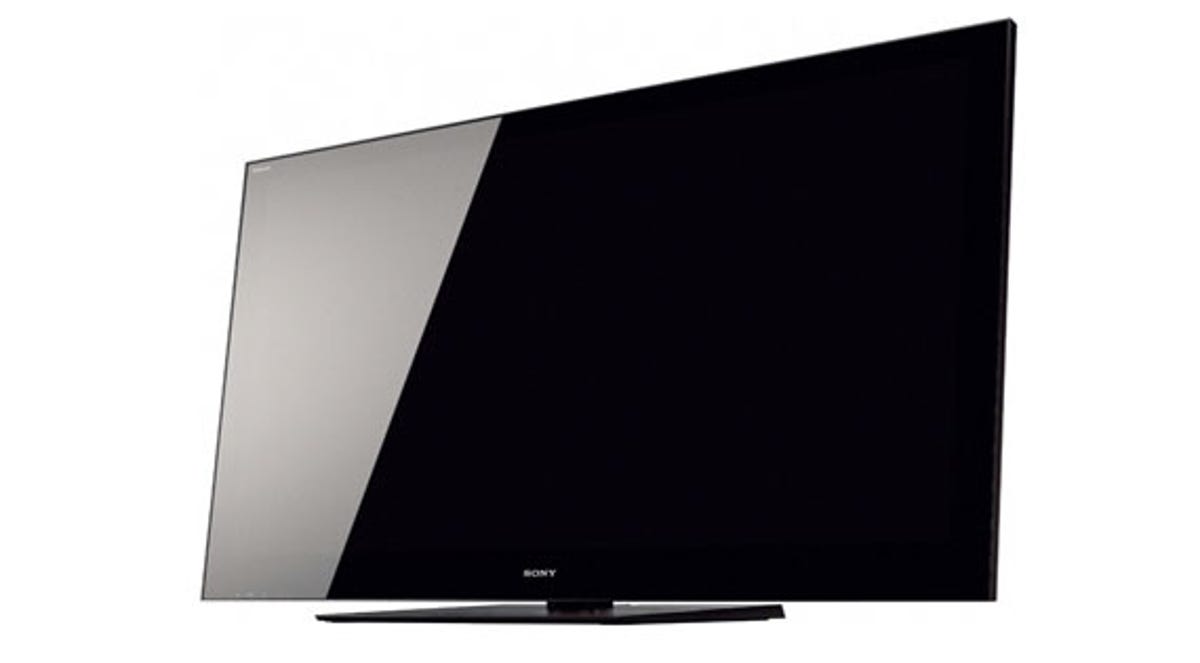
3D this, 3D that: anyone would think the whole world was 3D or something. However you feel about the third dimension being displayed on your telly, if you’re looking for a new TV — to watch the World Cup on, for instance — it makes sense to consider 3D-capable screens. You might not care about it now, but at some point in the future someone might come up with a compelling use for it.
There may not be any 3D coverage of the World Cup on either the BBC or ITV this year, but if you’re a Sky Sports subscriber, there’s going to be plenty of football for you to watch in 3D next season. Either way, all these TVs offer more than just 3D support, so you won’t miss out on great features just because your TV is one dimension up on its competitors.
LG
LG has adopted a unique attitude to 3D, in that it’s the only company that’s supporting both active and passive display technology. This might not mean much to you, but it’s useful to have a choice about what sort of TV and 3D glasses you want to use. Our 3D FAQ should help you decide which technology is best for you, if you’re in any doubt.
LG’s range is pretty impressive. There are two TVs from its Infinia LX990 range, one 47-incher and one 55-inch model. These are LG’s flagship models, with 400Hz picture mode and the now-ubiquitous Internet access, with YouTube video and access to Skype. You get two pairs of 3D glasses included too, which is fine if you’re just a couple, but not so good if you’ve got two 3D-hungry kids as well. Infinia TVs also feature full LED backlighting, which means you get the best possible contrast levels and local dimming to further improve colour and black performance.


Next up is the LX6900 range, which has another two TVs. The panels are 47 and 42 inches, and can display a 200Hz picture. You only get one pair of active 3D glasses included with these TVs though, which is going to make 3D viewing a very lonely experience until you shell out for more. The LX6900 TVs feature LED edgelighting, which means they’re super slim and have excellent black levels.
Both the LX990 and LX6900 ranges come with Freeview HD tuners too, which will give you access to HD World Cup matches, albeit in 2D. The 47LD950, on the other hand, has only a standard Freeview tuner, and is a standard LCD panel, with CCFL backlighting, where the other two ranges both feature some sort of LED illumination. That equates to slightly less impressive black levels, but will help keep the cost of these screens down. You also get four pairs of glasses with this TV, which is great for family use.
LG also has the LD950, which is a 47-inch passive 3D display. In this system, the TV is more expensive than traditional LCD panels, because an extra layer is fitted to the TV to make it work with cheaper passive glasses. If you’ve ever been to the cinema, and been allowed to keep your 3D glasses, you’ll have experienced passive 3D. This TV will suit football fans, because it has a resolution that matches Sky’s proposed 3D broadcasts. If, however, you want Full HD 3D, this isn’t the TV for you.
Sony
There are two choices with the Sony range of 3D TVs. You can either buy a set that’s 3D-ready but needs an additional glasses pack, or you can get a TV that comes with everything you need to start watching 3D — although video material is your responsibility.
If you want an all-inclusive package, the LX903 models are for you. You get Freeview HD included, along with built-in Wi-Fi access to Sony’s new online media service. Expect LoveFilm and BBC iPlayer on this soon — a real boon for Sony TVs, which have suffered from a lack of innovation in recent years. These TVs come with two screen sizes, either a modestly large 40 inches or a moderately gargantuan 60 inches. The smaller model is expected to cost around £2,000, with the 60-inch beast expected to set you back £3,500. The LX903 models come with one pair of 3D glasses each, with extra models costing £100 or so.


The HX range comes in four variations: two have 903 in their names and two have 803. The main difference is the 803 models are 100Hz, while the 903s are 200Hz. Both sub-ranges have Sony’s MotionFlow picture processing, and that claims a doubling of their native refresh rate to 200Hz and 400Hz respectively. The other key difference is that the 903-branded TVs are full LED backlit, whereas the 803 range features the slightly less contrast-capable edge lighting.
The HX903 models come in either 52- or 46-inch screen sizes, while the HX803 can be purchased with either a 40 or 46-inch screen. All of these TVs come with Freeview HD built-in and access to Sony’s aforementioned online video service.
Panasonic
With the simplest 3D range, Panasonic has just two 3D models, one with a 50-inch screen, the other a massive 65-inch model. The VT20 comes with two pairs of 3D glasses, so assuming you have a 3D source, such as Blu-ray or Sky 3D, you’ll be able to get started straight away.
Aside from their 3D credentials, the Panasonic TVs are the company’s high-end screens. You get a NeoPDP panel — Panasonic’s best and blackest to date. There’s also access to the VieraCast service, which allows you to watch YouTube video, share photos on Picasa and other online stuff. There’s also a THX mode, which allows you to get the best possible quality sound from movies. Panasonic promises its 600Hz mode will produce a full 1080p image, even for moving content — this is harder than you might think, and most TVs don’t manage it.


The 50-inch Panasonic 3D TV will cost you around £2,000, while the 65 goes for a much more ridiculous £5,000. Still, if you want a truly involving 3D experience, then you have to go for the biggest possible screen, and until 3D projectors arrive, this is the daddy.
Samsung
Samsung has taken a slightly different approach to 3D, in that it’s opting not to include 3D glasses with any of its TVs, badging them simply as ‘3D ready’. If you want glasses — and if you want 3D, you’ll need them — be prepared to pay extra. Prices seem to vary wildly online, but each pair will cost between £50 and £100. A voucher system currently means you’ll get free glasses, but this is only a short-term offer — Samsung says it may start including glasses in the future.
In terms of the selection of models available, Samsung’s is probably the most impressive. It can claim to have the second-largest 3D TV on the market, with its 63-inch C7000. This plasma model features a Freeview HD tuner and Samsung’s clunkily named Internet@TV service, which will give you access to online video and widgets that can access Twitter, Facebook and the weather on your TV. If you want a slightly smaller plasma, the C7000 is also available in a 50-inch variant too.


Samsung’s C8000 series is its flagship line-up, with screen sizes of 40, 46 and 55 inches. The design of this range is intended to wow, with a funky brushed-metal look and slender, polished stand. Also included are Internet@TV and the ability to make calls with integrated Skype. An optional camera makes video calls possible too, and is available from the Skype online store.
The C8000 range features the ability to record TV shows to USB memory, which means you get a basic PVR included in the price. Don’t expect to be able to record one channel and watch another, but even so, this is a smart little addition to TVs, and one we’d love to see more of.
The LCD C7000 range is similar in specification to the plasma models we mentioned earlier. Available in 40, 46 and 55-inch sizes, you get the same Internet features as the other Samsung models. The LCDs in the C7000 range, unlike the plasmas, sadly don’t have Freeview HD access, which is sure to disappoint World Cup fans keen to see HD football. The finish is also a more modest brown, as opposed to the space-age, metallic sheen of the 8000 series.
The last TV in Samsung’s arsenal is the LE40C750. This model is identical to the C7000 range, just with a slightly more boring case. Seriously, that’s the only major difference we can discern after some time staring at the spec sheet.
Samsung is also the first company we’ve seen to offer a pair of 3D glasses aimed at children. Its kid-friendly, blue-framed pair are also rechargeable, which should mean you can plonk the little terrors down in front of a 3D movie without worrying about having to replace fiddly watch batteries, or worrying about them being swallowed. The adult versions aren’t rechargeable, and also aren’t blue-framed.
These ranges are bound to change over the next year, so we’ll try to keep you up to date. Expect full reviews of all these TVs as soon as is humanly possible, and in the meantime let us know in the comments section if you have any questions.




